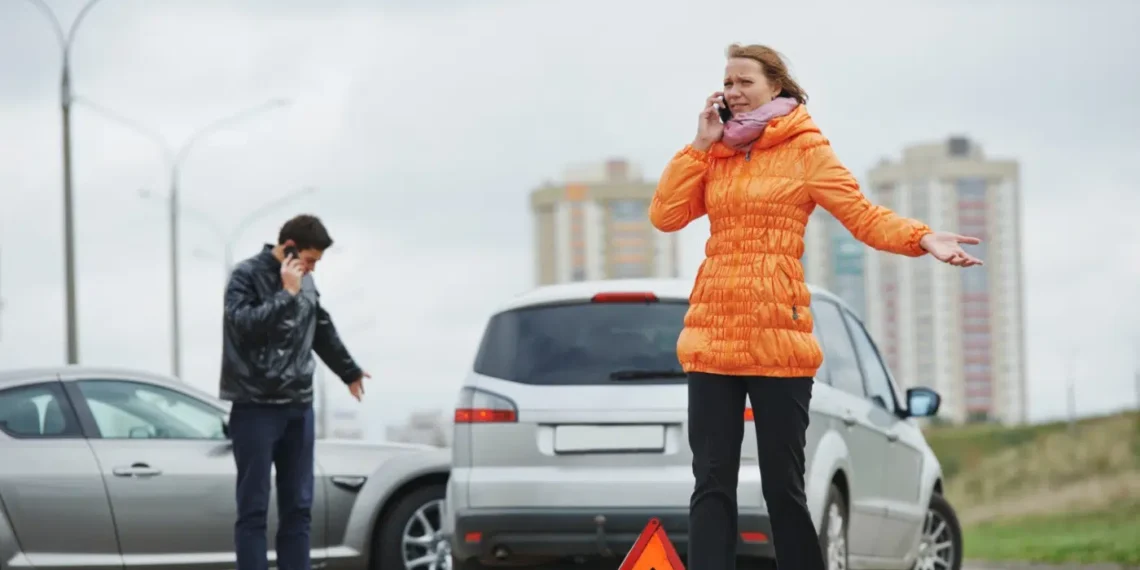Car accidents happen suddenly and often leave you feeling confused and overwhelmed. To make things worse, you might be unfairly blamed for the accident.
This adds insult to injury, especially when your pile of medical bills grows and you’re missing work. Don’t lose hope. Disputing an incorrect fault assignment is possible.
So, let’s get into the practical strategies to challenge the blame and the tactics insurance companies sometimes use to protect their bottom line.
9 Key Strategies for Challenging Fault
Here are some strategies for challenging faults.
Gather Evidence Immediately
After an accident, your first priority is ensuring everyone’s safety. However, as soon as possible, start collecting evidence. Take detailed photos and videos of the accident scene, focusing on vehicle damage, skid marks, positions of the cars, traffic control devices, and any other factors that might help explain what happened.
If there were witnesses, obtain their names, contact information, and a brief account of their recollection of the events. These witness statements can be incredibly powerful in supporting your version of the crash.
Plus, make sure you obtain a copy of the police report, as it serves as the initial official documentation of the accident. If the situation is complex or you’re facing unfair accusations, consider contacting a Minnesota car accident lawyer for guidance on protecting your rights.
Don’t Admit Fault
In the moments following an accident, it might feel natural to apologize or offer a sympathetic statement that could be misconstrued as accepting blame. It’s essential to resist this urge, even if you’re feeling flustered.
Instead, focus on calmly exchanging necessary information with the other driver, such as insurance details, driver’s license, and registration. Avoid making statements about how the accident occurred and let the evidence gathered at the scene speak for itself.
Hire an Experienced Attorney
Insurance companies employ teams of lawyers dedicated to minimizing their payouts. To protect your interests, you should strongly consider hiring a car accident attorney. These attorneys have in-depth knowledge of traffic laws, accident investigation techniques, and negotiation tactics.
They will act as your advocate, interpreting the evidence, building a strong case, and fighting for fair compensation to cover the damages caused by the at-fault driver.
Document Everything
Maintaining thorough records of all aspects of the accident and its consequences is crucial when challenging fault. Keep a detailed log of doctor’s visits, medical treatments, therapy sessions, medication costs, and any missed work days due to your injuries.
You should even consider keeping a diary outlining your pain levels, limitations caused by your injuries, and the emotional impact of the accident. This record-keeping will help your attorney demonstrate the full extent of your losses and strengthen your case.
Dispute the Police Report (If Necessary)
While police reports are valuable documents, they’re not always perfect. Officers may draw incorrect conclusions based on incomplete information or make errors when recording witness statements.
If you believe the police report contains inaccuracies or omissions, consult with your attorney. You may be able to file a supplementary report that corrects the record and incorporates additional evidence in your favor.
Challenge Witness Statements
Even with the best intentions, witness accounts can be subjective and prone to misinterpretation. People see accidents from different angles, and the memory of the events can fade over time.
This is especially important to consider after a car accident in Minnesota, where winter weather conditions can sometimes obscure views or make it harder for witnesses to recall details accurately.
Your lawyer can work to identify inconsistencies in witness statements, call into question their vantage points, and challenge aspects of their recollection that contradict other evidence or your version of events.
Comparative Negligence
In some cases, fault doesn’t fall squarely on a single driver. Comparative negligence states allow for a partial assignment of blame. For example, if you were slightly speeding but the other driver made an illegal turn directly in front of you, a portion of the fault could be assigned to you.
Don’t despair! A skilled attorney can be an invaluable resource in these situations. They can fight to minimize any percentage of fault assigned to you, ultimately reducing the amount of compensation you might owe.
Traffic Camera & Surveillance Footage
Traffic cameras located at intersections or nearby stores and businesses sometimes capture valuable footage of accidents. While not always available, your lawyer can investigate if this type of evidence exists.
Such footage may reveal crucial details that support your case, such as a car running a red light or failing to yield.
Expert Testimony
In complex cases, expert witnesses can make a significant difference. Accident reconstructionists analyze evidence to create simulations of how the crash occurred, engineers can examine vehicle damage to determine likely speed and impact forces, and medical experts can offer detailed assessments of your injuries and their long-term implications.
These experts provide specialized analyses that solidify your case and effectively counter the arguments presented by the other side.
Common Scenarios Where Fault is Disputed
While every car accident is unique, some types of collisions tend to have more frequent disputes over who was at fault. Let’s look at a few.
Rear-End Collisions
It might seem like rear-end accidents are automatically the fault of the driver who rear-ended another car. However, this isn’t always true. Factors like sudden, unnecessary braking by the lead car, malfunctioning brake lights, or unsafe following distances (tailgating) can all shift the blame. If you were the victim of a rear-end collision, don’t assume you have no recourse.
Intersection Accidents
Intersections are a hotbed for accidents. Disputes often arise over who had the right-of-way. Drivers can be accused of running red lights, making unsafe turns, or failing to yield to oncoming traffic. Witness accounts and traffic camera footage, if available, become incredibly vital to prove what truly transpired.
Left-Hand Turns
Turning left across traffic requires careful timing and judgment. Drivers making turns can misjudge the speed or distance of oncoming vehicles, while oncoming drivers might be speeding or driving distracted. Determining fault here frequently involves analyzing things like sightlines, traffic signals, and who had the right-of-way at that specific moment.
Sideswipe Accidents
These often occur during lane changes or merging. Disagreements center around which driver actually initiated the unsafe lane change or failed to check their blind spot properly. Evidence from dash cams or witnesses, along with vehicle damage patterns, can be helpful in establishing the sequence of events.
Final Thoughts
Being blamed for a car accident you didn’t cause feels like a double whammy. However, it’s important to know you don’t have to accept that blame without a fight. Gather evidence, document the impact this accident had on your life, and don’t be afraid to speak up if something doesn’t feel right.
Remember, hiring a car accident lawyer is often the smartest move. They’ll guide you through the process, champion your rights, and fight tirelessly to get you the justice you deserve.










